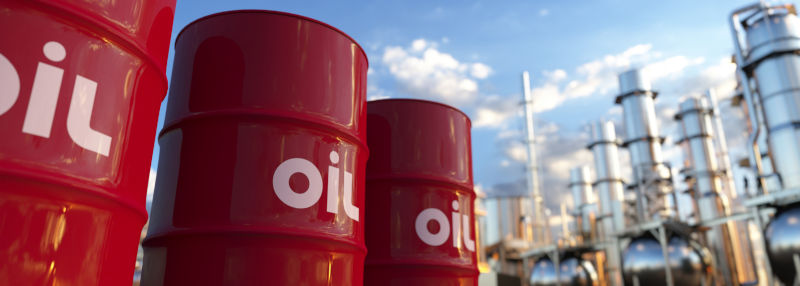Air Vice Marshal John Blackburn RAAF (retired) noted in his 2014 report on fuel security that Australia only had sufficient stores to supply service stations and hospital pharmacies for three days, retail pharmacies and chilled/frozen goods transport for seven and dried goods for eight. The social and economic consequences of such a collapse in our public and private road transport would be profound and pervasive.
Unfortunately there has only been marginal improvement in the 10 years since this report.
Liquid fuel supply in Australia continues to depend on private suppliers, market forces and a limited fleet of foreign-owned tanker ships. Our efficient “just-in-time” supply has led to Australia being the only oil importing country that does not meet its International Energy Agency obligations to retain a 90-day stock of net oil imports.
Although there is bipartisan political agreement that there is a problem, successive governments have failed to address it effectively. Efforts have been concentrated on increasing storage capacity, an ultimately ineffective strategy in the face of a prolonged disruption to supplies.
The obvious solution which has largely been ignored is to reduce demand and plan for energy independence.
Reducing fuel demand in the road transport sector is low hanging fruit.
The New Vehicle Efficiency Standard will reduce average vehicle consumption over time but is not enough by itself.
An ambitious program to speed up electrification of Australia’s road transport systems is a practical and effective way to reduce our reliance on imported fuels and improve energy security.
Battery electric vehicle technology is mature, with an expanding range of models including in the medium and heavy vehicle segments. Price parity with conventional passenger cars will inevitably flow to heavier vehicles as material and manufacturing costs fall.
Globally, BEVs are following the uptake curve typical of any new useful technology, making more than 90% of new car sales in Norway and 30% in China.
We have been in a similar situation before. In 1973, Australia was 70% self-sufficient for oil supplies, yet the Middle East oil crisis that year flattened the economy, helped create stagflation and temporarily killed off our appetite for big, thirsty cars. Instead, we started to import large numbers of smaller, fuel-efficient cars from the north Asian powerhouse economy of the day, Japan.
Is the risk to our liquid fuel supplies overstated?
In 2023, the IEA noted that Australia imported 94.1% of its net oil requirements, at a cost of A$59.9 billion, 10% of our total imports. Refined petroleum was A$37.7 billion of this total, making it our number one import by value.
Australia relies on imported refined fuels, mainly from Singapore, South Korea and Malaysia, which have large-scale refineries with low costs. A small amount of imported oil is refined in Australia’s two remaining refineries.
The IEA notes that global refining is predicted to decline from 2030 and that countries should commence planning for alternative energy sources.
Our shipping routes are a major risk to supply. Tankers from our suppliers of fuel, particularly refined fuel, cross the conflict-prone South China Sea, the strategic Straits of Malacca, or the seas around the Korean peninsula.
In turn, 30% of the world’s traded crude oil is transported via the Red Sea and Straits of Hormuz where recently even minor conflict using drones has caused serious disruption to shipping.
Would electrification of road transport be an effective strategy?
About 54% of liquid fuel imported into Australia is used in road transport and only 16% is used in all other forms of transport.
Ramping up incentives to speed up electrification of Australia’s passenger, light and heavy road transport vehicle fleet is a practical and effective way to reduce our reliance on imported fuels and improve energy security.
Other countries including South Korea, Norway and China are taking this approach.
Electrifying road transport is relatively simple using existing and rapidly evolving new technology. In a crisis, this would free up fuel for more demanding sectors like aviation, shipping, mining and agriculture, and buy time for rapid development of alternative fuels or further electrification.
The Australian Defence Force accepts that the strategic risk extends well beyond insufficient reserves and refineries.
The ADF’s plans include electrification (or hybridisation) of its entire fleet where possible, development of alternative fuels and moving to renewable energy, all without political comment.
While a fuel shortage would cripple our private and public transport sector, a fleet of electric cars, buses, trucks and trains would be completely immune to such disturbances. Although large parts of our electricity generation and distribution networks are foreign owned, the energy is generated with minimal dependence on imported fuels.
Fuel insecurity is a matter of critical national importance and deserves mature and rational discussion by all parties. It would be foolish to ignore or downplay a national threat of this magnitude. All solutions should be on the table.
One wonders how many of our elected representatives remember the chaos of 1973? Perhaps it’s time to look back and learn a few lessons?
(The opinions in this article are entirely those of the author.)

Christopher M. Johnson
Chris is a retired specialist paediatric anaesthetist from Perth WA with a longstanding interest in renewable energy and electrification. He is an active member of the Australian Electric Vehicle Association (AEVA). He and his partner regularly drive an electric vehicle across Australia to visit family.
